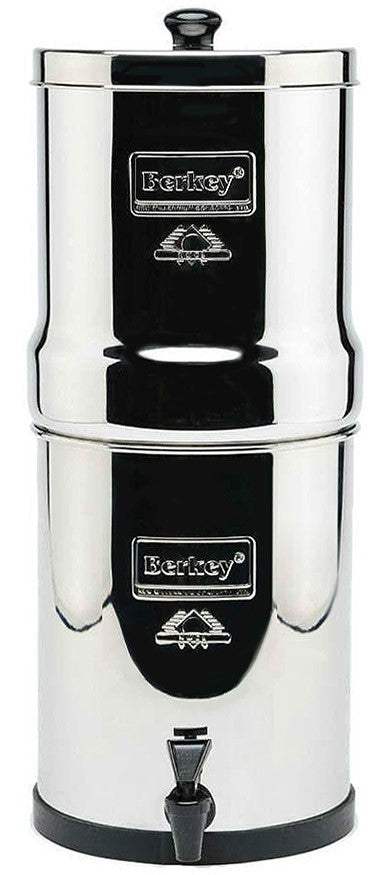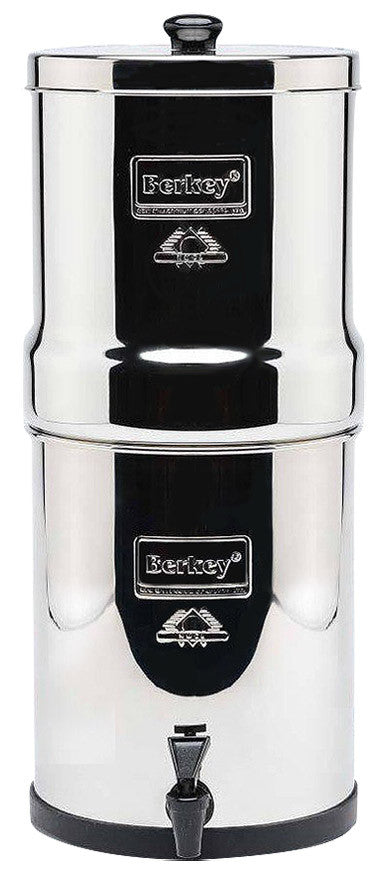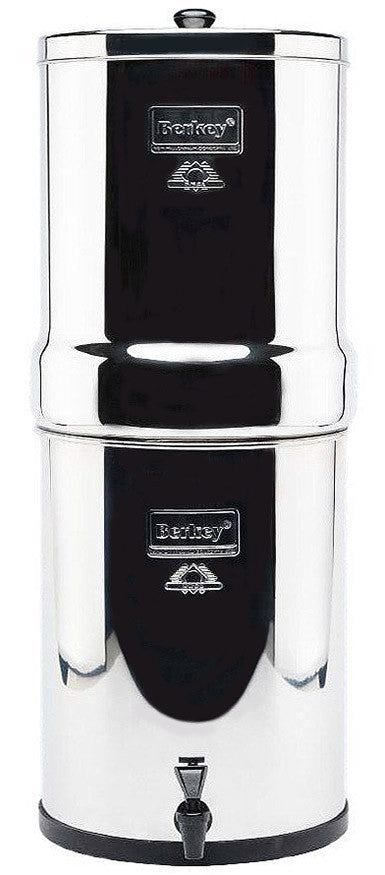What is The Best Option to Remineralize Distilled Water? How to Add Minerals Naturally?

This is actually not new to people who drink distilled water daily. But, yes, the taste is flat and boring. Compared to spring water or even regular tap water, it may be a little....bland.
I first noticed this when I tried drinking distilled water for a week. It quenched my thirst, sure, but it felt nothing compared to spring water.
This is because distilled water is special. It is water that has been boiled and condensed.
The result is very pure water. But because of this, the minerals that usually give water its natural flavor are lost.
How is it a big deal, then? Minerals like calcium and magnesium do more than enhance the taste of water. They also play a crucial role in maintaining our bodies' health and hydration.
Mineral-free water does not provide the same nutritional value. Various studies from Verywell Health support this.
And it's not just them. Other water companies also say that distilled water contains no dissolved solids at all. Hence, it lacks essential trace elements necessary for good health.
But if we were to put everything back to the basics, even Wikipedia says that while distilled water is safe to drink, sometimes it is found to be less desirable. Why? Because the absence of minerals makes natural water more balanced.
This is not to say that distilled water is not healthy. Indeed, some people utilize it for medical supplies, fish tanks, or when 100% clean water is needed.
Yet, for daily consumption purposes, it's just NOT. Experts agree that it may be best to replenish minerals for optimal flavor and nutritional needs.
In this article, we will explore natural methods for remineralizing distilled water. We will explore various methods that are easy to try at home. That includes adding mineral-rich salts, using natural drops, or powders.
Hopefully, by the time you reach the end, you will have clear options to make your distilled water healthier and more enjoyable to drink daily.
Why Remineralize Distilled Water?
Distilled water is cleaned water that has been subjected to a process of distillation.
It means boiling water to the point where it becomes steam and then condensing it back into a liquid.
The method purifies out impurities, bacteria, and chemicals, but also removes minerals.
Distilled water has nearly zero total dissolved solids. Additionally, it contains very few minerals compared to filtered water or tap water.
It is safe to consume distilled water, but it also has some disadvantages.
Well, for starters, we've already talked about how the absence of healthy minerals alters the taste.
Most people report that it tastes flat and less refreshing compared to healthy water that has natural minerals. Some professionals also claim that mineral-free purified water will not contribute to hydration as much as mineral-supplemented drinking water.
I find it refreshing when it's ice cold, but after a while, I started craving that mineral ‘bite’ regular water has.
For people with limited mineral content in their diet, distilled water can be of little use to the body.
In fact, it's been suggested that an insufficient diet in calcium and magnesium would be helped by drinking water that contains more minerals. So, you already get the picture of what would happen if you rely on pure water too much.
The World Health Organization has also expressed fears that long-term consumption of low-mineral water can influence health. Research in general internal medicine indicates that trace minerals such as magnesium and calcium contribute to the body's functions aside from taste.
Remineralization, however, is not critical for everyone.
If you already consume a well-balanced diet with adequate nutrients, consumption of distilled water that is not mineralized might not do you harm.
In this event, remineralizing would be more of a matter of taste correction rather than resolving a health concern. So, yes, there are people who opt to remineralize distilled water to make it taste closer to bottled water or fresh filtered water.
In fact, some individuals like the clean and pure taste of distilled water as it is.
Natural Remineralization Methods

Distilled water can be remineralized in countless ways by simple natural methods. Chemical synthetics can be avoided by adding minerals. They are simple to test at home and also enhance taste and water quality.
Himalayan Pink Salt
One of the more popular options is Celtic sea salt or Himalayan pink salt.
These are full of calcium, magnesium, potassium, and other trace minerals.
They provide a trace mineral content amount that makes the distilled water have a barely noticeable spring water-like taste.
Mineral Drops
The second choice is trace mineral drops or effervescent tablets.
The drops contain liquid dissolvable minerals. And to be fair, they are easy to put into any glass or jug.
They are one of the most sought-after remedies for individuals who require added minerals in reverse osmosis water or purified water.
Some people consume electrolyte powders. The powders are comprised of salts, nutrients, and electrolytes that can help the body get hydrated.
Bioavailable Mineral Sources
Lastly, there are bioavailable mineral sources.
Fulvic or humic mineral drops, coconut water powder, and seaweed extracts all provide natural minerals. These may increase the mineral levels. Plus, it can improve the overall balance of your drinking water.
All procedures have both beneficial and detrimental effects.
There are procedures specially designated for taste. In contrast, others are designated for health utilization or mineral absorption. So, take your pick.
Still not quite sure? Let's go over them one by one in detail. We will describe each procedure in detail below. Read well so that you can pick the most appropriate procedure to mineralize distilled water according to your needs.
Method 1: Himalayan or Celtic Salt
Among the simplest methods to remineralize distilled water is to use Himalayan salt or Celtic salt.
This is the first method most people try. The difference was instant. The water felt smoother and more refreshing. Although, of course, you really need just a pinch, or it tastes salty.
These are not table salts.
They are mineral-added natural salts containing calcium, magnesium, and potassium.
By adding Himalayan salt to distilled water, you are basically putting mineral content and pH as well. This makes the water smoother and more refreshing.
To accomplish this process, combine a pinch of Celtic sea salt or pink Himalayan salt with one liter of distilled water. Allow it to dissolve and rest for a day.
I've read in some blogs that letting it rest for 24 to 48 hours allows the salts to infuse more evenly.
This easy step alone can transform flat, pure water into healthy water that tastes more like filtered water or bottled water.
The advantages of the method speak for themselves. It is easy, natural, and inexpensive.
A little Himalayan salt goes a very, very long way. It also provides useful minerals without requiring specialized equipment.
For those who do water distillation at home with a large pot and a kitchen faucet, this is one of the simplest methods.
However, the disadvantages are also worth noting. Salt water adds sodium. Do note, though, that you must handle the portion with care. Excessive salt can make the water too salty and may be unsafe for individuals with certain health conditions. Like, high blood pressure, for instance.
Another issue is that sunlight and heat can affect how the salts behave in water. So, you should keep the water in a shaded area.
In general, adding Celtic sea salt or pink Himalayan salt is a simple method for mineralizing distilled water. It enhances taste, raises mineral levels, and makes consumption of distilled water similar to that of bottled water.
It is not perfect, but for most people, it is the easiest initial step to mineralize distilled water at home.
Method 2: Trace Mineral Drops, Powders, or Effervescent Tablets
Trace mineral drops are concentrated drops that have calcium, magnesium, potassium, sodium, and other minerals. They are meant to reintroduce beneficial minerals lost during distillation.
The drops offer a solution to mineralizing distilled water without introducing unwanted contaminants. They are straightforward to use and can make distilled water taste better.
I like this method when I’m traveling. It's super convenient, and I know exactly how much I’m adding.
Mineral powders and effervescent tablets actually have the same advantages. These items help balance the amount of total dissolved solids in filtered water, making it taste closer to bottled water.
The process is also straightforward. You must fill a bottle or jug with distilled water and add the correct number of drops or tablets according to the instructions.
Although I recommend stirring the water thoroughly to ensure the minerals are distributed evenly. Some also recommend checking water quality with a TDS meter if you wish to quantify the difference in mineral content.
There are a few benefits to this approach. Trace mineral drops enable accurate dosing, ensuring you add the precise amount of mineral desired. They are easy to bring with you wherever you go. They do not contribute a sodium spike like salt water could.
There are downsides, too. Mineral drop quality can be inconsistent. So, it makes your drinking water taste so much like something metallic or salty.
Drop or powdered products also translate to repeat purchases, which are more expensive over the long term than straightforward options such as Himalayan salt. So, it's up to you!
For people seeking an easy and controlled method of supplementing minerals, trace mineral drops are among the most consistent methods.
They can transform pure water into healthy water. Plus, it tastes a lot like bottled water. Not to mention how it enhances mineral consumption in daily drinking water.
Method 3: Alkaline Pitchers or Mineral Infusing Devices
Another method of remineralizing distilled water is to use alkaline pitchers or mineral-infusing devices.
These are home water filtration systems that operate by running filtered water through mineral stones or specific media.
I used one of these at home for a while. It's great for convenience, but the filters add up in cost.
This action increases the pH and replenishes the water with minerals.
These pitchers are used in most households that opt for healthy water with more minerals. They are just like plain devices that refine water and kill chlorine and some impurities. Obviously, they are safe to use and give a refreshing taste to distilled water.
Some people've already vouched for alkaline pitchers. In different brands, that is. Some users note that it actually removed calcium and magnesium but added sodium via ion exchange.
This example illustrates how outcomes can vary depending on the product and its filtration method.
The primary advantage of alkaline pitchers is convenience. They are simple to leave on a faucet or countertop and require minimal effort.
They give you mineralized water every time you pour. So, as you can see, it's much less maintenance than dropping drops or adding powders.
The drawbacks are variable results and ongoing filter expenses. Some pitchers won't deposit enough healthy minerals. Also, others can deposit more sodium than is wanted.
Replacement filters are also expensive, and their effectiveness varies as they age.
For people who need an instantaneous and consistent source of potable water with improved mineral composition, alkaline pitchers are a convenient option. They are not that ideal (if I'm being honest), but they are an effective means of mineralizing distilled water at home.
Method 4: Bioavailable Mineral Sources
Bioavailable mineral sources are yet another option to add more minerals to distilled water.
These sources are plant and natural-based. So, it means that the minerals are easily absorbed by the body. This is different from salts or tablets, whose bioavailable minerals are already readily usable by the body.
Some options include fulvic or humic drops, which are earthy flavored and have a very mild alkalizing effect. They can be used to make water healthier. However, please note that they can stain teeth if taken regularly.
Coconut water powder is another option. It adds minerals and electrolytes and has a very mild sweet taste. So if taste is a big deal for you, coconut can definitely improve the taste of distilled water. It tastes like bottled water.
Seaweed extracts like Irish moss or dulse contain iodine and other nutrients but are salty and sea-flavored. Use them with care, as too much iodine can affect the thyroid. Magnesium citrate or magnesium glycinate can be added. They have a bitter taste but will raise the pH of the water and help in mineral absorption.
Sample recipe: Mix three to five drops of humic or fulvic, one-quarter teaspoon of coconut powder, one to two drops of seaweed extract, a pinch of magnesium citrate, and a dash of lemon juice in a liter of distilled water. The mixture produces mineralized water with higher nutrient content and unique flavors.
Coconut water powder was my favorite. It gave a hint of sweetness. But seaweed extract? Too ocean-y for me. But you do you!
The advantage of bioavailable mineral sources is that the body easily absorbs them. Therefore, they provide more minerals than basic salts.
They also allow taste and mineral content to be customized. The drawbacks are that the flavors may not suit all, and some have added sugar or concerns about iodine.
This is more complicated than adding salt or mineral drops, but it offers a natural way of converting pure water into healthy water with equilibrium in nutrients.
It can also benefit individuals who consume distilled water for health and want more than improved taste.
Method 5: Crushed Limestone or Dolomite Columns
A less popular method for remineralizing distilled water is to filter it through ground limestone or dolomite.
Limestone contains calcium carbonate, and ResearchGate says that it adds calcium to pure water. Dolomite contains magnesium, which keeps the mineral consumption balanced. The two together create healthy water with more minerals.
This process is achieved by passing distilled water through a column filled with broken-down rocks. The rocks slowly dissolve and leave behind calcium and magnesium in the water. It has been used in bigger water supply systems and aquariums to improve water quality. It is a natural way to mineralize distilled water without using drops or salts.
The benefits of this method are continuous mineralized water production and the use of natural materials. It can be used in constant systems. This includes distillation rigs or household drinking water systems that require minerals for ongoing use.
The disadvantages are that it is not practical for the trim levels of drinking water. It must be installed, serviced, and cleaned. The rocks can cause bacteria or contaminants if not cleaned or changed. This reduces its ease of use for those just needing a glass or pitcher of distilled water at home.
Most families find this too complicated. I mean, understandably so. However, it highlights how water health series studies have been exploring natural methods to supplement water with additional minerals.
For those with large fish tanks or water systems, limestone and dolomite may be a long-term solution to improve water quality.
Should You Try Them?

This is actually a very tricky question. I can't answer this for you.
Remineralization of distilled water provides improved control over taste, mineral absorption, and hydration.
There are several natural ways to add desirable minerals. Himalayan or Celtic salt, trace mineral drops, alkaline pitchers, bioavailable sources such as coconut or seaweed, or crushed limestone can be used as alternatives. Each has advantages and limitations.
If all you want is something plain and inexpensive, adding a few drops of Himalayan salt to your pitcher will enhance the taste and provide additional minerals.
If you want precision and control, trace mineral drops are the answer.
If you desire options, bioavailable sources offer a diverse range of tastes and enhanced absorption. Alkaline machines are convenient for daily use, while limestone works best for large systems.
For anyone, the best ratio is trace mineral drops or a few pinches of Himalayan salt.
They are safe, convenient, and effective for drinking water on a daily basis. Both improve the quality of distilled water and its flavor.
The best approach is to test different processes in small quantities. Then, observe what suits your taste and lifestyle. Healthy water is not necessarily complex.
At the end of the day, water is personal. What tastes right for me might not be your favorite. Try a few methods and you’ll quickly figure out which one makes your daily glass of water feel just right.
← Older Post Newer Post →





